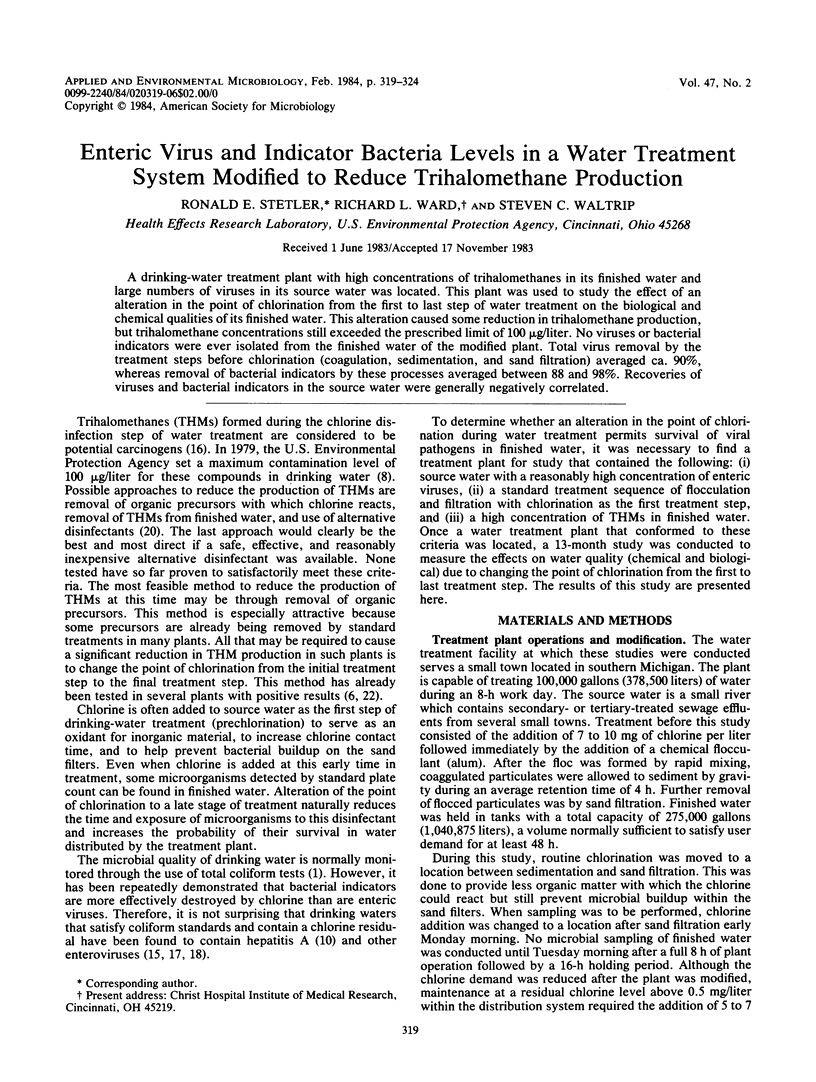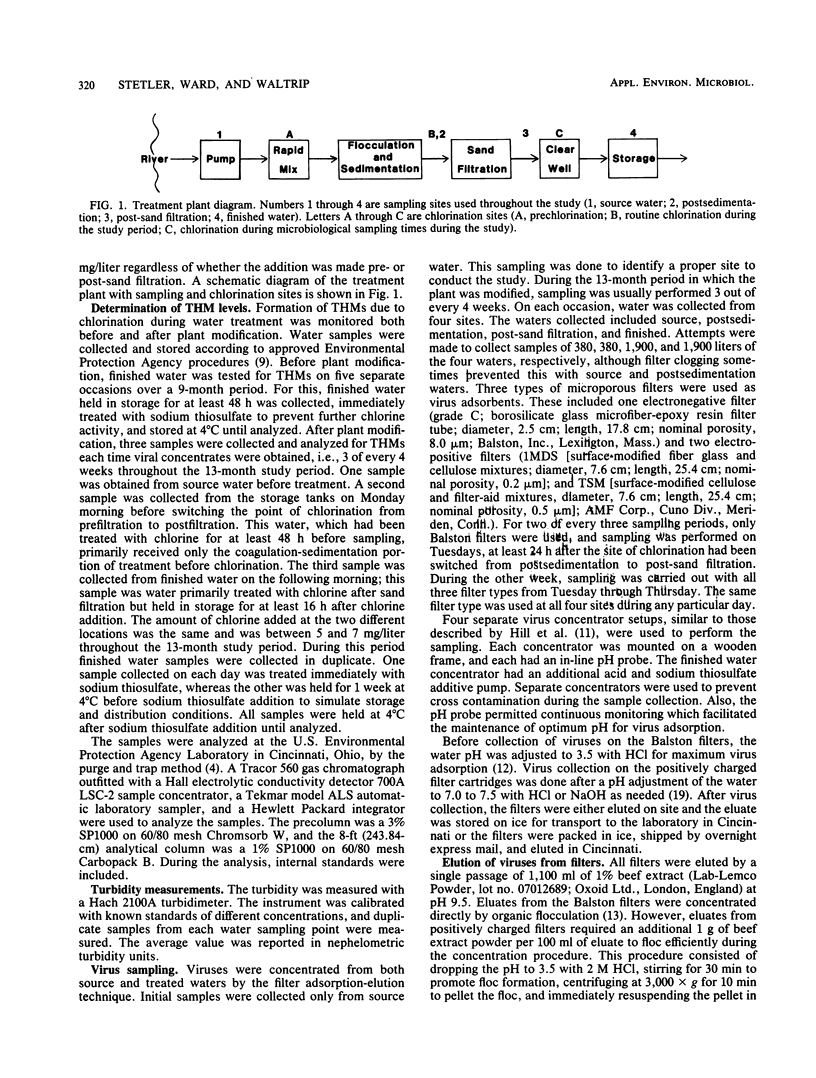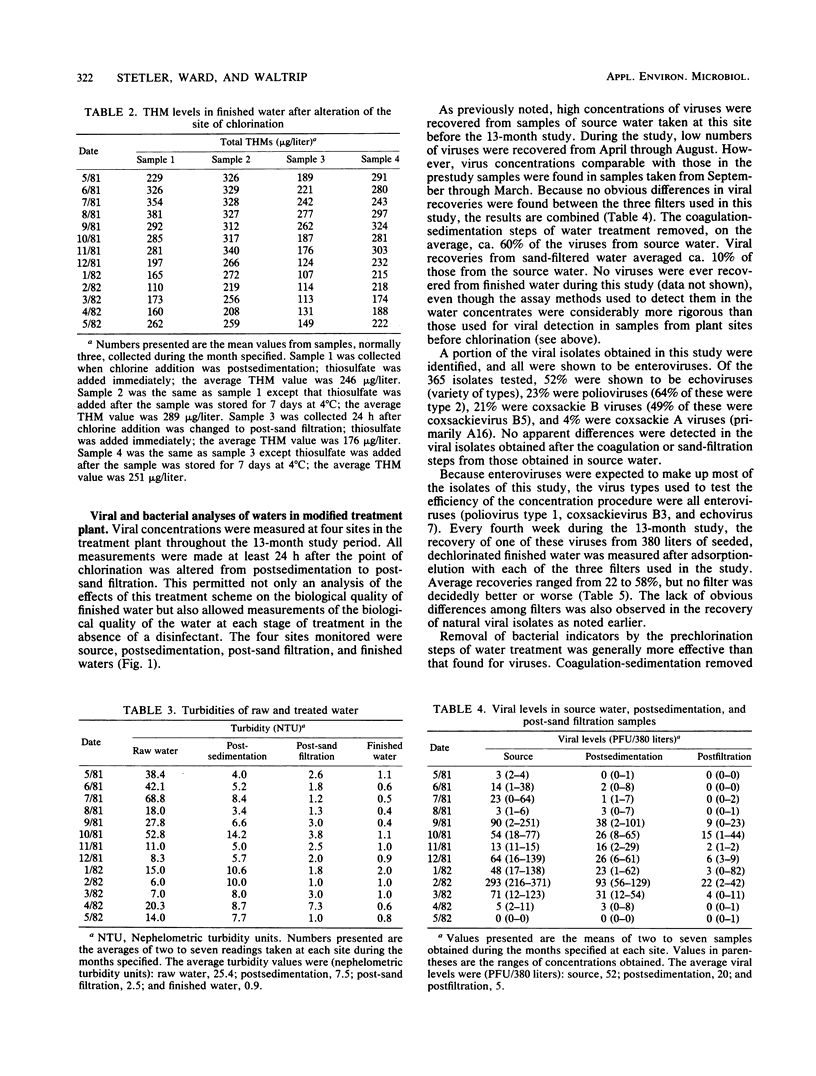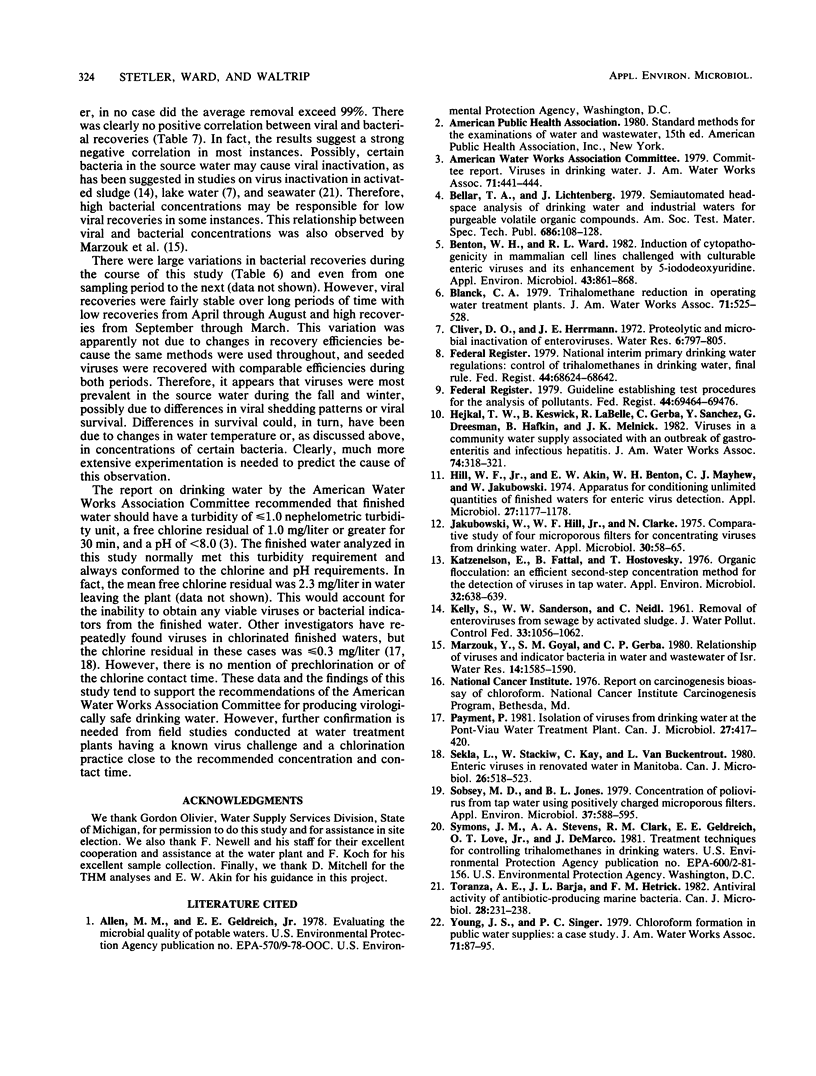Abstract
A drinking-water treatment plant with high concentrations of trihalomethanes in its finished water and large numbers of viruses in its source water was located. This plant was used to study the effect of an alteration in the point of chlorination from the first to last step of water treatment on the biological and chemical qualities of its finished water. This alteration caused some reduction in trihalomethane production, but trihalomethane concentrations still exceeded the prescribed limit of 100 micrograms/liter. No viruses or bacterial indicators were ever isolated from the finished water of the modified plant. Total virus removal by the treatment steps before chlorination (coagulation, sedimentation, and sand filtration) averaged ca. 90%, whereas removal of bacterial indicators by these processes averaged between 88 and 98%. Recoveries of viruses and bacterial indicators in the source water were generally negatively correlated.
Full text
PDF





Selected References
These references are in PubMed. This may not be the complete list of references from this article.
- Benton W. H., Ward R. L. Induction of cytopathogenicity in mammalian cell lines challenged with culturable enteric viruses and its enhancement by 5-iododeoxyuridine. Appl Environ Microbiol. 1982 Apr;43(4):861–868. doi: 10.1128/aem.43.4.861-868.1982. [DOI] [PMC free article] [PubMed] [Google Scholar]
- Hill W. F., Jr, Akin E. W., Benton W. H., Mayhew C. J., Jakubowski W. Apparatus for conditioning unlimited quantities of finished waters for enteric virus detection. Appl Microbiol. 1974 Jun;27(6):1177–1178. doi: 10.1128/am.27.6.1177-1178.1974. [DOI] [PMC free article] [PubMed] [Google Scholar]
- Jakubowski W., Hill W. F., Jr, Clarke N. A. Comparative study of four microporous filters for concentrating viruses from drinking water. Appl Microbiol. 1975 Jul;30(1):58–65. doi: 10.1128/am.30.1.58-65.1975. [DOI] [PMC free article] [PubMed] [Google Scholar]
- Katzenelson E., Fattal B., Hostovesky T. Organic flocculation: an efficient second-step concentration method for the detection of viruses in tap water. Appl Environ Microbiol. 1976 Oct;32(4):638–639. doi: 10.1128/aem.32.4.638-639.1976. [DOI] [PMC free article] [PubMed] [Google Scholar]
- Payment P. Isolation of viruses from drinking water at the Point-Viau water treatment plant. Can J Microbiol. 1981 Apr;27(4):417–420. doi: 10.1139/m81-063. [DOI] [PubMed] [Google Scholar]
- Sekla L., Stackiw W., Kay C., VanBuckenhout L. Enteric viruses in renovated water in Manitoba. Can J Microbiol. 1980 Apr;26(4):518–523. doi: 10.1139/m80-087. [DOI] [PubMed] [Google Scholar]
- Sobsey M. D., Jones B. L. Concentration of poliovirus from tap water using positively charged microporous filters. Appl Environ Microbiol. 1979 Mar;37(3):588–595. doi: 10.1128/aem.37.3.588-595.1979. [DOI] [PMC free article] [PubMed] [Google Scholar]
- Toranzo A. E., Barja J. L., Hetrick F. M. Antiviral activity of antibiotic-producing marine bacteria. Can J Microbiol. 1982 Feb;28(2):231–238. doi: 10.1139/m82-031. [DOI] [PubMed] [Google Scholar]


